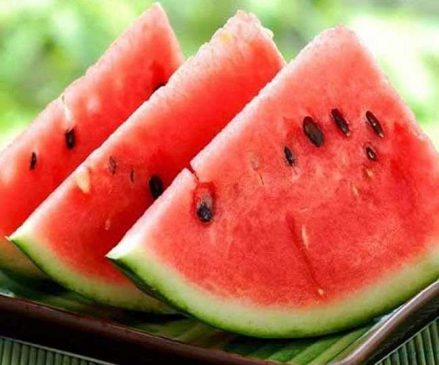While everyone loves to gorge on the sweet red flesh of watermelon, many tend to remove the white layer that surrounds the fruit. However, it may have benefits.
Sweet and juicy watermelons are in demand these days as the mercury rises to uncomfortable levels. The fruit contains 90 per cent of water and a truckload of vitamins, fibre, potassium and other minerals. Watermelon not only helps prevent dehydration, heat stroke and other heat-related illnesses, it also keeps your immunity high in summer. While everyone loves to gorge on the sweet red flesh of watermelon after removing the thick, green exterior, many people also remove the white layer that surrounds the fruit. However, removing it could mean you are depriving yourself of some extra vitamins, minerals, zinc and a special compound called Citrulline.
Read More: Blindness prevention: 6 sun protection tips for eyes in summers for eye patients
There isn’t anything more refreshing than savouring a huge bowl of watermelon when the scorching summer heat threatens to heat up your body and affect your crucial organs from heart, lungs to brain. Eating watermelon in summer can help you get a huge dose of antioxidants, vitamins, minerals and important micronutrients for your body. However, the white layer is a storehouse of several nutrients just like the fruit and may be a good source of citrulline.
Why you should not remove white layer surrounding red flesh of watermelon
Nutritionist Ryan Carter in his recent Instagram post says while relishing watermelon, one should not get rid of the white layer that surrounds the red pulp.
“The next time you eat a watermelon, don’t make this mistake. That’s just eating the centre and disregarding the white pith around the outside which hasn’t got much flavour,” he says.
Read More: Hypertension Risks: 5 Everyday Causes That Lead To High Blood Pressure You Must Know
Watermelon rind helps in arginine production
Ryan says watermelon rind has got citrulline, an amino acid that supports the arginine system, and is to do with nitric oxide. Citrulline is converted by the body into the amino acid arginine, which is thought to improve blood flow and help build muscle. Arginine plays important roles in the metabolism of an organism. It is the precursor for the synthesis of proteins and other molecules of great biological importance, including nitric oxide, ornithine, polyamines, agmatine, proline, glutamate, creatine, dimethylarginine, and urea.
Benefits of citrulline
“The key thing here is arginine supplements. They don’t technically work with the peripheral system which is to do with our muscles or to do with our reproductive organs. It helps with our urea cycle which is how we break down and remove excess protein or nitrogen in our body. Citrulline has been shown to be superior to arginine on that front even when you combine high intensity training in obese individuals. Having citrulline alongside leads to more fat loss and improvements in strength gains. So load up on citrulline which is found abundantly,” advises Ryan Carter.
Read More: 5 delicious salads to add to your diet to beat the heatwave, prevent dehydration
Other benefits of white part of watermelon
- It is high in vitamin A, vitamin C, potassium and magnesium.
- They contain higher concentrations of certain antioxidants, minerals, vitamins and active ingredients.
- They are high in fibre, that aids in digestion and also helps control blood sugar levels and cholesterol levels.
- Watermelon rind is also rich in nutrients with chlorophyll, citrulline, lycopene, amino acids and flavonoids and phenolic compounds.





































